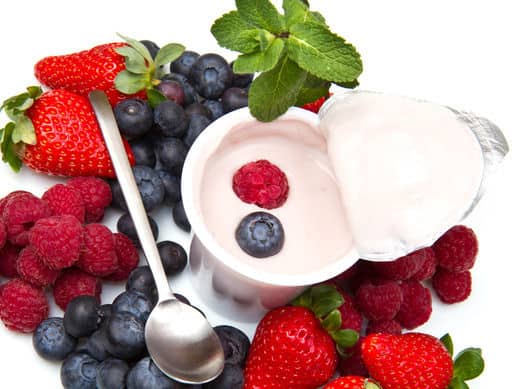
Previous
Dealing with Toxicity in the Workplace

Next
Liver Cancer Thwarted by Specialized Radiation
Probiotics and Synbiotics Battle Fat in the Liver
Providing the gastrointestinal system with beneficial bacteria could be part of a winning strategy to defeat nonalcoholic fatty liver disease.
The antithesis of antibiotics, probiotics have emerged as a powerful wellness tool. Antibiotics are intended to kill harmful bacteria, while probiotics are intended to replenish beneficial bacteria. The recognition of beneficial bacteria in the gastrointestinal system has helped many people recover from various health ailments, and is now being lauded for an ability to improve or reverse fatty liver disease.
NAFLD
Describing excessive fat accumulation in the liver that is not caused by drinking alcohol, nonalcoholic fatty liver disease (NAFLD) is the most common chronic liver disease in the world. Despite NAFLD’s potential to cause cirrhosis, liver failure and liver cancer, there are currently no FDA (Food and Drug Administration) approved medications to treat fatty liver disease. Lifestyle management approaches, such as losing excessive weight, eating a healthful diet and exercising regularly are the universally adopted strategies for combating NAFLD. However, supplementing with probiotics or synbiotics is steadily gaining respect in the quest for a lean, healthful liver.
Probiotics and Synbiotics
There are billions of bacteria in a human’s gastrointestinal tract. Some of the bacteria contribute to good health, but others contribute to disease and infections. Probiotics (such as acidophilus and lactobacillus) are beneficial bacteria that populate the gut – helping to produce healthy intestinal flora. The regular use of probiotics is believed to re-colonize the digestive tract with enough normal flora to prevent damaging bacteria from gaining dominance.
Unfortunately, the re-colonization of the gut with supplemental probiotics can be challenging to sustain without providing these coveted microorganisms with specific nutrients. Prebiotics are the specific nutrients needed by probiotics to grow, thrive and reproduce. Examples of prebiotics include lactulose, fructo-oligosaccharides (inulin and FOS), soy oligosaccharides and galacto-oligoaccharides. A relatively new approach to obtaining bacterial balance in the gut is combining both probiotics (the desired microorganism) and prebiotics (food for that desired microorganism) to make synbiotics.
NAFLD, Probiotics and Synbiotics
According to emerging data, NAFLD may be a result of an imbalance in the gastrointestinal-liver relationship:
- The portal system connects veins between the gastrointestinal tract and the liver.
- Through the portal system, the liver is susceptible to the intestine’s bacterial products, often associated with intestinal permeability and small intestine bacterial overgrowth.
- In addition, harmful bacteria likely increase oxidative stress on the liver – creating an inflammatory cascade that contributes to NAFLD progression.
Evidence of probiotics’ and synbiotics’ value in mitigating fat accumulation in the liver has recently been on the rise:
- As published in a May 2014 edition of the journal PLOS One, University of Grenada researchers examined the effect of two probiotics (bifidobacteria and lactobacillus) on the fatty livers of obese rats. They found that the animals treated with probiotics had a significant reduction of fat in their liver and less inflammation in the liver compared to those who were not fed the probiotics.
- As published in a March 2014 edition of The American Journal of Clinical Nutrition, analysts from St. Louis described that patients with advanced NAFLD often had small intestinal bacterial overgrowth and increased production of inflammatory cell signaling proteins. In their editorial, they confirmed that beneficial results in NAFLD were observed in humans after receiving probiotic and prebiotic treatments. Upon discussing a double blind, randomized, placebo-controlled trial involving 52 non-diabetic, newly diagnosed NAFLD patients, the analysts reported that after 28 weeks of a synbiotic formulation, the patients had reduced liver stiffness and reduced inflammatory markers.
Both articles described above indicate the need for larger, more detailed research on using probiotics or synbiotics to improve NAFLD. While there are still many unknown variables to be worked out for determining the best type and formulation of beneficial bacteria, there appears to be a substantial amount of data indicating that NAFLD may be improved and possibly reversed with probiotic supplementation.
http://ajcn.nutrition.org/content/99/3/535.abstract, Synbiotic supplementation in nonalcoholic fatty liver disease: a randomized, double-blind, placebo-controlled pilot study, Tannaz E, et al, Retrieved August 15, 2014, The American Journal of Clinical Nutrition, March 2014.
http://annalsofhepatology.com/revista/numeros/2014/HP145-02-Probiotics%20(F_070814J)_PROTEGIDO.pdf, Probiotics and synbiotics may improve liver aminotransferases levels in non-alcoholic fatty liver disease patients , Caroline Buss, et al, Retrieved August 15, 2014, Annals of Hepatology, September-October 2014.
http://www.aor.ca/probiotics-help-reverse-fatty-liver-disease/, Probiotics Help to Reverse Fatty Liver Disease, Retrieved August 15, 2014, AOR, 2014.
https://www.liversupport.com/more-evidence-that-a-fatty-liver-profits-from-probiotics/, More Evidence that a Fatty Liver Benefits from Probiotics, Nicole Cutler, L.Ac., Retrieved August 15, 2014, Natural Wellness, 2014.
http://www.medicinalfoodnews.com/vol10/2006/synbiotics, Synbiotics for Good Gut Health, Retrieved August 15, 2014, Medical Food News, 2014.
http://www.ncbi.nlm.nih.gov/pubmed/24500146, More evidence that probiotics may have a role in treating fatty liver disease, Maddur H, Neuschwander-Tetri BA, Retrieved August 15, 2014, The American Journal of Clinical Nutrition, March 2014.
http://www.plosone.org/article/info%3Adoi%2F10.1371%2Fjournal.pone.0098401, Effects of Lactobacillus paracasei CNCM I-4034, Bifidobacterium breve CNCM I-4035 and Lactobacillus rhamnosus CNCM I-4036 on Hepatic Steatosis in Zucker Rats, J. Plaza-Diaz, et al, Retrieved August 15, 2014, PLOS ONE, May 2014.
http://www.scienceworldreport.com/articles/16139/20140720/could-probiotics-help-prevent-fatty-liver-disease.htm, Could Probiotics Help Prevent Fatty Liver Disease?, Kathleen Lees, Retrieved August 13, 2014, scienceworldreport.com, 2014.







The link between gut health and liver disease is complex, but well documented. Once our patients are found to have fatty liver, they respond best to Hepatiben from http://www.livermedic.com.